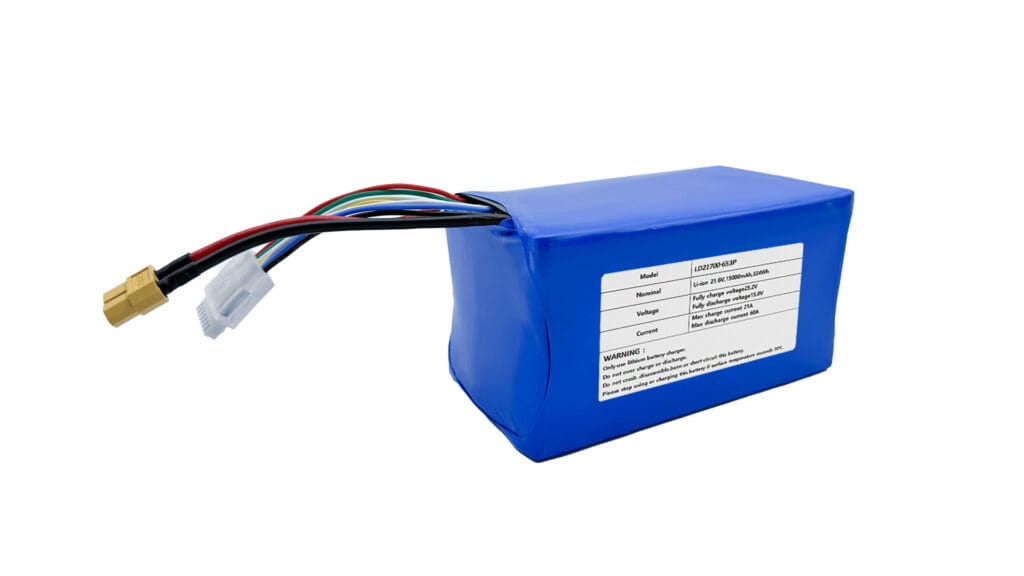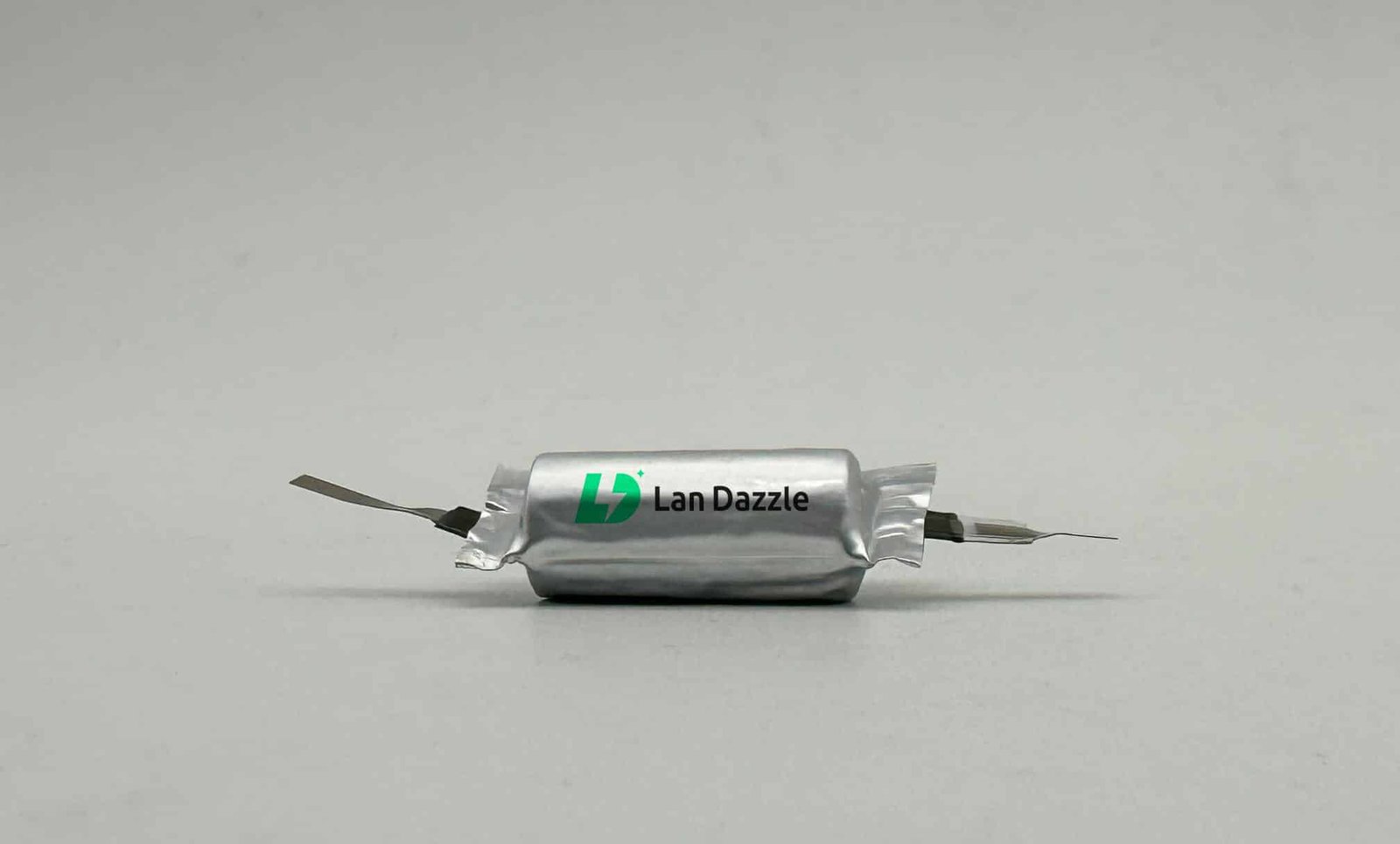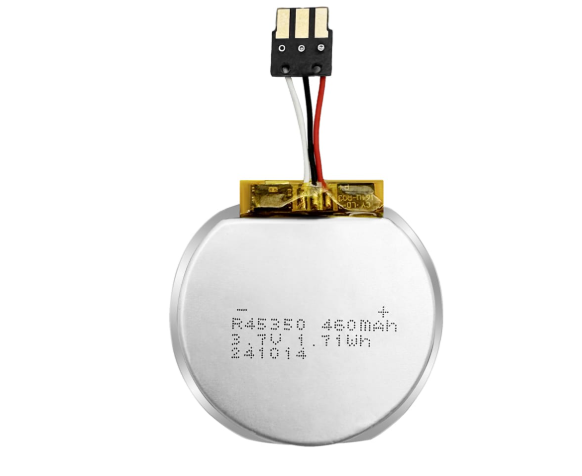In an age where technology seamlessly integrates into every facet of our lives, baterías de iones de litio have become the silent powerhouses behind our smartphones, laptops, e-bikes, power tools, and countless other devices. Their compact size and high energy density have revolutionized portable electronics, offering convenience and efficiency. However, this ubiquitous presence also brings a unique and often underestimated safety concern: the potential for lithium battery fires.
Unlike traditional fires, which require external oxygen to burn, lithium battery fires are different. They contain their own oxygen source within their chemical makeup, making them incredibly challenging to extinguish and prone to a dangerous phenomenon known as “embalamiento térmico.” Knowing how to react in such an emergency is not just about protecting property; it’s about safeguarding lives. This comprehensive guide will equip you with the essential knowledge to understand the risks, take immediate and effective action, utilize appropriate suppression methods, and most importantly, implement preventative measures to minimize the threat of a lithium battery fire in your home.
1. Understanding the Lithium Battery Fire Risk
The unique characteristics of baterías de iones de litio that make them so efficient also contribute to their fire risk. A clear understanding of these properties is the first step in effective prevention and response.
1.1 What Makes Lithium Batteries Unique?
At their core, baterías de iones de litio are energy storage devices that rely on the movement of lithium ions between a positive electrode (cathode) and a negative electrode (anode) through a flammable electrolyte liquid. Their high energy density means they pack a lot of power into a small space. The critical difference with these fires lies in the concept of “embalamiento térmico.”
Thermal runaway is a dangerous, self-sustaining chain reaction where an increase in temperature within a battery cell causes further temperature increases, leading to the rapid release of stored energy, often resulting in fire or explosion. This is exacerbated by the fact that the flammable electrolyte and certain internal components can produce their own oxygen, allowing the fire to sustain itself even in the absence of external air. This makes them far more challenging to extinguish than ordinary combustible fires.
1.2 Common Causes of Lithium Battery Fires
While designed for safety, baterías de iones de litio can fail under certain conditions, leading to fire. Recognizing these common triggers is crucial for prevention:
- Overcharging or Incompatible Chargers: Using a charger not specifically designed for your device or leaving a battery plugged in long after it’s fully charged can lead to excessive heat buildup and cell degradation.
- Daño físico: Dropping, crushing, puncturing, or otherwise damaging a battery can compromise its internal structure, leading to internal short circuits and rapid heating.
- Manufacturing Defects: Although rare, inherent flaws in the battery’s manufacturing process can lead to instability and increased fire risk. Always purchase products from reputable brands and retailers.
- Exposure to Extreme Temperatures: Storing or using batteries in very hot environments (e.g., direct sunlight, hot car interiors) or extremely cold conditions can degrade cell integrity and increase the likelihood of embalamiento térmico.
- Improper Storage: Storing batteries loosely where terminals can short-circuit with other metal objects, or storing them near flammable materials, poses a significant risk.
The increasing prevalence of these batteries has unfortunately led to a rise in incidents. For instance, the London Fire Brigade reported e-bikes and e-scooters as the fastest-growing fire risk in the capital in 2023, with a 46% rise in incidents between 2022 and 2023. Del mismo modo, the U.S. Consumer Product Safety Commission (CPSC) reported over 25,000 incidents of overheating or fire involving more than 400 different consumer products powered by lithium batteries over a five-year period (data up to 2018). These figures underscore the importance of vigilance.
1.3 Warning Signs of a Failing Battery
Before a full-blown fire erupts, lithium batteries often provide critical warning signs. Heeding these indicators can allow you to act before an emergency escalates:
- Swelling or Bulging: The battery casing or the device itself appears swollen or deformed. This indicates internal gas buildup.
- Excessive Heat: The device or battery becomes unusually hot to the touch during charging or normal use, beyond typical warmth.
- Hissing, Popping, or Crackling Sounds: These noises can indicate internal short circuits or the venting of gases.
- Strong Odor: A distinct, often sweet or chemical smell emanating from the battery or device. This is often the electrolyte leaking or off-gassing.
- Smoke: Any visible smoke, especially white or gray, is a critical sign of immediate danger and impending fire.
If you observe any of these signs, discontinue use immediately and proceed with caution.
2. Immediate Actions When a Lithium Battery Catches Fire
When a lithium battery fire ignites, every second counts. Your primary goal is always safety and evacuation.
2.1 Prioritizing Safety: Evacuation First!
This cannot be stressed enough: your safety and the safety of everyone in your home is paramount.
- Evacuate Immediately: If a lithium battery fire is large, rapidly escalating, or producing significant smoke, do not attempt to fight it. Get yourself, your family, and any pets out of the house as quickly and safely as possible. Follow your established home fire escape plan.
- Call Emergency Services (911/Local Equivalent): As soon as you are safely outside, call the fire department. Provide them with as much detail as possible, specifically mentioning that it’s a “lithium battery fire” if you know the source. This information is crucial for firefighters to bring the correct equipment and approach.
- Containment (If Safe and Small): If the fire is very small (e.g., a cell phone battery fire, a small power tool battery) and you can safely approach it without putting yourself at risk, your goal is to prevent it from spreading and to contain it. This might involve carefully moving the burning device to a safe, non-combustible area. Examples include:
- Pushing it off a table onto a concrete floor.
- Using a shovel or non-conductive tool to move it outside to a driveway or patch of dirt.
- Placing it in a large metal container (e.g., a trash can) that can be moved outdoors or safely submerged.
- Crucially, only do this if you can maintain a safe distance and the fire is truly small and manageable. If it’s a large device like an e-bike or has already engulfed nearby combustibles, evacuate immediately.
2.2 Small, Manageable Fires: Initial Response
For very small, contained lithium battery fires, your immediate response can be critical. However, it’s vital to understand what not to use:
- DO NOT Use Traditional ABC Dry Chemical or CO2 Extinguishers as Primary Agents: These extinguishers are designed for Class A (ordinary combustibles), Class B (flammable liquids), and Class C (electrical) fires. While they might temporarily knock down the flames of a lithium battery fire, they do not cool the internal cells or stop embalamiento térmico. The fire can (and often will) reignite, sometimes with increased intensity, after the extinguisher is depleted.
- Water is Often the Best Immediate Choice for Cooling: For consumer-grade lithium battery fires, a large volume of water, continuously applied, is often the most effective immediate suppression method. Water works by rapidly absorbing heat from the battery cells, cooling them below the point of embalamiento térmico and helping to prevent reignition.
- Aplicación: If it’s safe to do so, use a garden hose to flood the burning battery, or submerge the entire device in a bucket of water, a bathtub, or a sink. Continue to apply water for a significant period (e.g., 10-15 minutes, or until the battery is cool and there are no signs of smoke or hissing), even if the flames appear to be out. The goal is to cool the internal cells.
- Safety Precautions with Water: While water is effective, remember it’s an electrical fire. If the device is still plugged into an outlet, disconnect the power only if it’s safe to do so from a distance (e.g., flipping a breaker). Otherwise, prioritize water application and maintaining distance.
2.3 Containing Smoke and Fumes
Lithium battery fires produce highly toxic gases, including carbon monoxide, hydrogen fluoride, and other hazardous chemicals. The smoke itself is highly flammable and corrosive.
- Ventilation is Key: As soon as a lithium battery fire is detected, if it’s safe to do so without re-entering a dangerous area, open windows and doors to ventilate the space.
- Leave the Area Immediately: For homeowners, once initial steps (evacuation, calling 911, safe initial suppression if applicable) are taken, leave the building and ensure good ventilation. Do not re-enter until emergency services declare it safe.
- Post-Fire Air Quality: Even after the fire is out, the lingering fumes can be dangerous. Professional cleanup and air quality testing may be necessary before reoccupying the space.
3. Effective Fire Suppression Methods for Lithium Batteries
While water is often the most accessible initial response for small consumer battery fires, specialized tools and professional intervention are crucial for larger or persistent incidents.
3.1 Water: The Primary Agent for Cooling
As noted, water‘s ability to rapidly absorb heat makes it a primary tool for lithium-ion battery fires, especially at the consumer level. The challenge lies in applying enough water for a sufficient duration to cool the battery’s core and stop the embalamiento térmico process.
- Mecanismo: Water acts as a heat sink. When applied to a burning battery, it turns into steam, carrying away significant amounts of heat. This cooling effect is vital for breaking the embalamiento térmico cycle that makes these fires so tenacious.
- Application for Home Use: For a small device fire (like a laptop or phone), a large bucket of water or a bathtub filled with water can be used to submerge the device. For a larger device like an e-bike or power tool battery that is actively burning, a garden hose can be effective, but requires continuous application of a significant volume of water. Don’t just spray and stop; flood the battery until it is completely cool to the touch and shows no signs of smoke or hiss.
- Why Continuous Application Matters: Unlike traditional fires where extinguishing the flames might be enough, lithium battery fires can reignite minutes or even hours later if the internal temperature remains high enough to restart embalamiento térmico. This is why continuous cooling, sometimes for hours, is critical. Professional firefighters often submerge active or compromised EV batteries in large tanks of water for extended periods to ensure thorough cooling and prevent reignition.
3.2 Specialized Extinguishers: What to Look For
While water is often the best immediate answer for homeowners, there are specialized extinguishers designed for lithium-ion battery fires that offer enhanced effectiveness.
- Lith-Ex (Lithium-ion Extinguishers): These extinguishers contain specific chemicals designed to combat lithium battery fires. Examples include vermiculite-based agents (e.g., AVD – Aqueous Vermiculite Dispersion) or encapsulator agents. These agents work by:
- Cooling: Rapidly reducing the battery’s temperature.
- Encapsulating: Forming a barrier around the battery cells, which helps to smother flames and prevent oxygen from reaching the reactive materials.
- Preventing Reignition: Creating a thermally insulating film that can stop the chain reaction of embalamiento térmico. While an investment, having a Lith-Ex extinguisher can provide a critical advantage for homes with multiple lithium-powered devices.
- Water Mist Extinguishers: These extinguishers produce a fine mist of deionized water, which can be very effective at cooling the battery cells and reducing the intensity of the fire. The fine mist also helps reduce the risk of electrical fire hazards compared to a solid stream of water.
- Fire Blankets: Specialized fire blankets are designed to smother flames and contain smoke, limiting the spread of the fire and reducing exposure to toxic fumes. While they can contain flames and deprive them of external oxygen, they often do not cool the battery sufficiently to stop embalamiento térmico, meaning the battery can continue to heat up underneath the blanket and potentially reignite once the blanket is removed. They are best used as a temporary containment measure to allow for safer application of water or to await professional help.
- Sand: For very small battery fires, sand can be used to smother the flames and help absorb some heat. However, it is generally less effective than water for sustained cooling and may not penetrate into a battery pack to stop embalamiento térmico.
3.3 The Role of Professional Firefighters
For any lithium battery fire beyond a very small, easily managed incident, professional help is essential.
- Specialized Training and Equipment: Firefighters receive specific training on how to handle lithium-ion battery fires. They have access to large volumes of water, specialized nozzles, thermal imaging cameras to monitor battery temperature, and hazardous materials (hazmat) teams to deal with toxic fumes from battery fire and damaged batteries.
- Long-Term Monitoring: Due to the risk of reignition, firefighters will often monitor a compromised battery for an extended period, sometimes for hours or even days, ensuring it remains cool and stable. They may even transport the battery to a designated safe location (e.g., a pool of water or a containment drum) for continued observation.
- Scene Safety and Overhaul: After the flames are out, firefighters will ensure the scene is safe, monitor air quality, and advise on necessary cleanup protocols.
4. Prevention is Key: Minimizing Risk at Home
The most effective way to deal with a lithium battery fire is to prevent it from happening in the first place. Adopting safe practices can significantly reduce your risk.
4.1 Safe Charging Practices
Many lithium battery fires originate during charging. Implement these habits:
- Use Original or Certified Chargers Only: Always use the charger supplied with your device, or a reputable, certified replacement charger. Generic or cheap chargers may not regulate power correctly, leading to overcharging o battery overheating. Look for UL certified batteries and chargers.
- Avoid Overcharging; Unplug When Full: While many modern devices have built-in overcharge protection, it’s a good practice to unplug batteries once they are fully charged, especially for larger devices like e-bikes or power tools.
- Charge on Non-Combustible Surfaces: Place devices on hard, non-flammable surfaces like concrete, tile, or a metal tray while charging. Avoid charging on beds, carpets, or near curtains.
- Avoid Unattended Charging: Do not charge devices overnight or when you are not home, especially large batteries. Never charge a device under your pillow or on a couch, where heat can build up rapidly.
- Ensure Good Ventilation: Charge batteries in well-ventilated areas to allow heat to dissipate.
4.2 Proper Storage and Handling
How you store and handle your batteries can significantly impact their safety.
- Store at Room Temperature: Keep batteries in a cool, dry place, away from direct sunlight, heat sources (e.g., radiators, ovens), and extreme cold. This falls under battery storage best practices.
- Evite los daños físicos: Be gentle with your devices and batteries. Avoid dropping, crushing, or puncturing them. Store them in a way that prevents accidental impact.
- Keep Batteries Dry: Moisture can cause short circuits. Keep batteries away from water or high humidity.
- Proper Storage for Spare Batteries: Store spare batteries in individual, non-conductive pouches or containers to prevent terminals from accidentally short-circuiting with other metal objects (e.g., keys in a drawer).
- Do Not Store Fully Charged or Fully Depleted for Long Periods: For long-term storage, charge batteries to about 50% capacity, as this can prolong their lifespan and reduce stress on the cells.
4.3 Identifying and Handling Damaged Batteries
If you suspect a battery is damaged or failing, act immediately:
- Discontinue Use: If you notice any warning signs (swelling, leaking, heat, smell, sounds), stop using the device/battery immediately.
- Isolate Safely: Carefully move the damaged battery or device to a non-combustible area, such as outside on concrete, in a sand-filled metal bucket, or a ceramic pot. Keep it away from anything flammable.
- Do Not Attempt Repairs: Never try to open, repair, or modify a damaged batería de litio or device. This can be extremely dangerous and risks explosion or fire.
4.4 Safe Disposal of Lithium Batteries
Proper disposal is a critical, often overlooked aspect of lithium battery safety.
- Never in Regular Trash or Recycling: Baterías de litio can cause fires in trash compactors, recycling facilities, and landfills. They absolutely do not belong in your household trash or curbside recycling bin.
- Specialized Recycling: Always take end-of-life or damaged lithium batteries to designated hazardous waste collection facilities or specialized battery recycling programs. These programs are equipped to handle and process them safely. Refer to EPA Guidelines for Lithium Battery Disposal.
- Tape Terminals: Before dropping off batteries for recycling, it’s good practice to place non-conductive tape (like electrical tape) over the battery terminals to prevent short circuits during transport or storage.
Research from Aviva plc in January 2025 revealed that more than half of UK businesses had experienced an issue linked to lithium-ion batteries, yet only half of those were following safety guidance. This highlights a significant awareness gap and demonstrates that preventative measures are often neglected, underscoring the critical need for this information. For further comprehensive guidelines, consult NFPA Battery Safety Guidelines.
Conclusión
The remarkable convenience and efficiency of baterías de iones de litio have made them indispensable in our daily lives. However, their unique chemical properties also present distinct fire hazards that demand our attention and respect. Understanding the potential for embalamiento térmico, recognizing the warning signs of a failing battery, and knowing the immediate, effective actions to take are vital components of home fire safety.
While the prospect of a lithium battery fire can be alarming, preparedness is your greatest defense. Prioritize evacuation, call emergency services promptly, and for small, contained incidents, remember that generous application of water is often the most effective cooling agent. Crucially, invest in prevention: use original chargers, avoid physical damage, store batteries properly, and always dispose of them responsibly through specialized battery recycling programs, following guidance from sources like UL Lithium-Ion Battery Safety Standards.
By taking proactive steps and equipping yourself with the right knowledge, you can significantly mitigate the risks associated with baterías de iones de litio, protecting your home, your loved ones, and your peace of mind. Review your home fire safety plan today, consider adding appropriate extinguishing tools like a Lith-Ex extinguisher, and make safe battery practices a cornerstone of your household routine.





